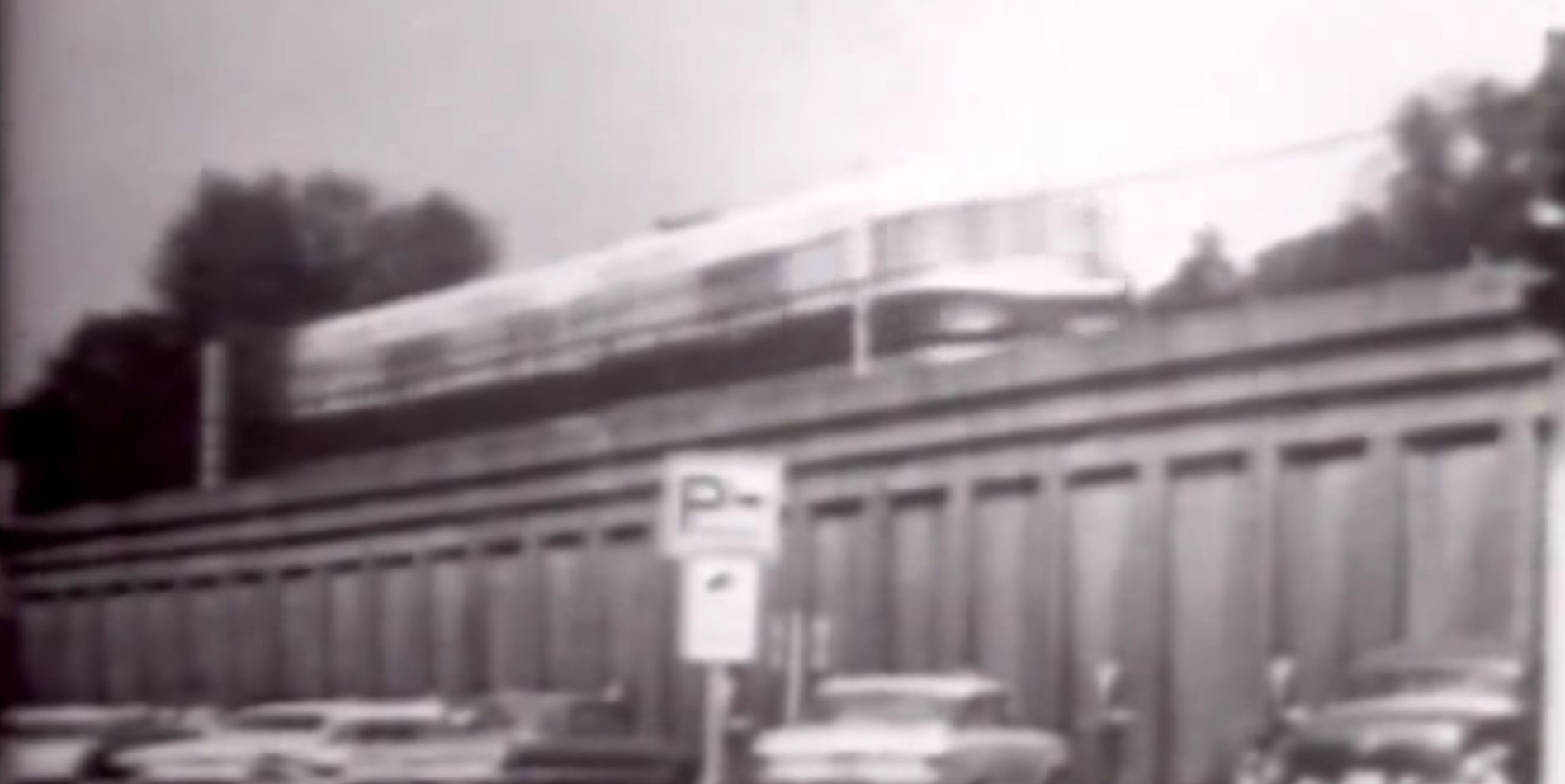Fifty years ago St. Louis was discussing the need for rapid transit. Political leadership supported the idea, and there was at least consensus that something needed to change. In 1965 St. Louis congestion was a real challenge.
The combination of exploding car ownership, new highways through the urban core, and residents moving to the suburbs and jobs not yet having followed, jammed any new road that was built. As we have observed, the problem had been identified more than half a century ago.
While surely many in 1965 didn’t believe that St. Louis was embarking on “what promises to be its greatest period of expansion”, suburban flight had changed the equation for the region. Soon, residents and jobs would be moving at an unprecedented pace.
One answer proposed was rapid transit. Although St. Louis would wait until 1993 and the opening of the first MetroLink segment between North Hanley and 5th & Missouri in East St. Louis. Still, at least the conversation 50 years ago understood clearly the definition of rapid transit. Today we talk about Bus Rapid Transit on highways without dedicated lanes or prioritized signals.
Yet the challenges are different today. The promoted purpose of transit is different today. Economic development of blighted areas is presented as on par with moving people. Expanding MetroLink would represent rapid transit expansion, but change in bus service, a city streetcar, and the Loop Trolley are something else.
Should St. Louis prioritize true rapid transit today? Should we instead focus on walkable and transit dense neighborhoods (a concept not recognized in the documentary from which the clip below is excerpted). What is the region’s challenge today, and how do we address it?
[Narrator]
Good evening, our subject is rapid transit for St. Louis. Or maybe we ought to phrase it like this: “Rapid transit for St. Louis?”
The City of St. Louis now has a Metropolitan Area Transit system consisting of busses with one remaining streetcar line to be phased out. The City of St. Louis, however, notably lacks a rapid transit system, and the distinction needs to be made clear right at the very start.
Urban transit, generally speaking, is a system of passenger-carrying vehicles like street cars or buses operated for the use of the public along regularly scheduled routes in the Metropolitan Area. Rapid Transit, on the other hand, has come to mean that part of an urban transit system that operates along an exclusive right of way.
A Bi-State bus on a public highway is not, strictly speaking, rapid transit even when it is
being driven at fifty miles an hour in light traffic. The reason it is not rapid transit is because it shares the right of way with automobiles, trucks, motorcycles, and any and every other kind of gasoline or diesel powered rolling equipment licensed to use the public roads.
Here, however, is an example of rapid transit. The electric cars are not streamlined or excessively powerful and they operate over this route and an average speed of not more than 45 miles an hour, but the point is that they operate on a private right of way without the hindrance of street-born traffic, even in the rush hours.
Rapid transit can operate overhead, or at grade level, or underground. It can operate on conventional steel rails or a monorail. Perhaps someday in the future it’ll be able to operate without rails or even any wheels at all.
Nowadays there’s an almost desperately revived interested rapid transit. All around the world engineers are re-evaluating old rapid transit ideas like suspended monorail systems, and are
experimenting with new concepts like trains of automated rubber-tired electric-powered coaches to run along special concrete tracks.
This television program will be about the possibility of developing a rapid transit system for
St. Louis and it will take up such related questions as whether we can afford one or whether
we even need one in the first place.
[Woman on the street]
“Oh I think rapid transit would be a wonderful thing. I think it would revitalize the downtown section, would be a way for people to go downtown easily and without having to worry about parking their cars.”
[Man speaking from his car window]
“Mass transit system would be of no particular advantage to me because when I get to work I need my car several times.”
[Narrator]
Some say yes. Some say no. Some say maybe. But assuming St. Louis should decide to go ahead with plans for a rapid transit system, there would then rise up a whole host of secondary problems like where would you put the rapid transit lines? Could you make use of the railroad tunnel that runs under downtown St. Louis and across Eads Bridge? And what kind of a rapid transit system should St. Louis consider? Something futuristic and little radical? Something conventional, but tried and true?
Well, these are some of the questions and considerations we should try to put in logical order as this program proceeds. The subject of a rapid transit system for St. Louis is surprisingly important and surprisingly urgent.
[Raymond Tucker, City of St. Louis Mayor]
“It is the development of a rapid mass transit system that I feel should have first priority among matters to be pushed on a regional basis. It would not be practical or even possible for this part or that part of the earth to go it alone in providing rapid mass transit. Without widespread informed and determined citizen support rapid mass transit cannot become a reality.”
[Voiceover]
We repeat: the difference between ordinary urban transit and rapid transit is the ability of the rapid transit vehicles to go over traffic or alongside traffic or under traffic instead of everlastingly plowing through traffic as in this city of St. Louis, Gateway to the West, at the beginning of its third century, and what promises to be its greatest period of expansion.

